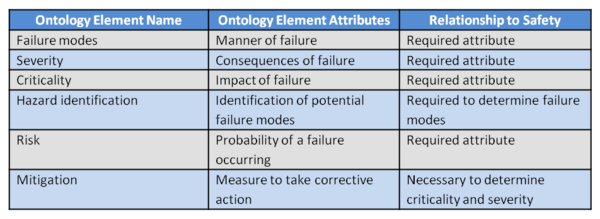System Safety
In the most general sense, safety is freedom from harm. As an engineering discipline, safety is concerned with assuring that life-critical systems remain operational even when other parts of the system fail. MIL-STD-882D defines system safety as “The application of engineering and management principles, criteria, and techniques to achieve acceptable mishap risk, within the constraints of operational effectiveness, time, and cost, throughout all phases of the system life cycle" (DoD 2000, p. 2).
Hazards
System safety engineering focuses on identifying and eliminating hazards with the ultimate goal of reducing the occurrence of mishaps by persons qualified in the field (DoD 2000). A hazard is defined as “Any real or potential condition that can cause injury, illness, or death to personnel; damage to or loss of equipment or property; or damage to the environment” (DoD 2000, p. 1). However, safety engineering is often performed in reaction to adverse events. For example, many improvements in aircraft safety come about as a result of recommendations by the National Air Traffic Safety Board based on accident investigations. Mishap risk is defined as “An expression of the impact and possibility of a mishap in terms of potential mishap severity and probability of occurrence” (DoD 2000, p. 2). Failure to identify risks to safety, and the according inability to address or "control" these risks, can result in massive costs, both human and economic (Roland and Moriarty 1990).
System Safety Personnel
System Safety specialists are typically responsible for ensuring system safety. Air Force Instruction (AFI) 91-202 (2005) provides the following guidance (USAF 1998):
9.1 System safety disciplines apply engineering and management principles, criteria, and techniques throughout the life cycle of a system within the constraints of operational effectiveness, schedule, and costs.
9.1.1. System safety is an inherent element of system design and is essential to supporting system requirements. Successful system safety efforts depend on clearly defined safety objectives and system requirements.
9.1.2. System safety must be a planned, integrated, comprehensive effort employing both engineering and management resources.
Safety personnel are responsible for the integration of system safety requirements, principles, procedures, and processes into the program and into lower system design levels to ensure a safe and effective interface. Two common mechanisms are the Safety Working Group (SWG) and the Management Safety Review Board (MSRB). The SWG enables safety personnel from all IPTs to evaluate, coordinate, and implement a safety approach that is integrated at the system level in accordance with MIL-STD-882D (DoD 2000). Increasingly, safety reviewes are being recognized as an important risk management tool. The MSRB provides program level oversight and resolves safety related program issues across all integrated product teams (IPT).
Table 1 provides additional information on safety.
Safety Ontology
- safety ontology table (developed for BKCASE)
References
Citations
DoD, “Military Standard, Standard Practice for System Safety,” document MIL-STD-882D, Department of Defense.
Roland, H. E. and B. Moriarty. System Safety Engineering and Management (New York: Wiley and Sons, Inc., 1990).
USAF, “The U.S. Air Force Mishap Prevention Program,” Air Force Instruction (AFI) 91-202, United States Air Force.
Primary References
No primary references have been identified for version 0.5. Please provide any recommendations on additional references in your review.
Additional References
No additional references have been identified for version 0.5. Please provide any recommendations on additional references in your review.
Article Discussion
Signatures
--Bkcase 19:09, 22 August 2011 (UTC) (on behalf of Dick Fairley)
--Asquires 16:40, 31 August 2011 (UTC)Update: deleted Figure as source is unknown.
